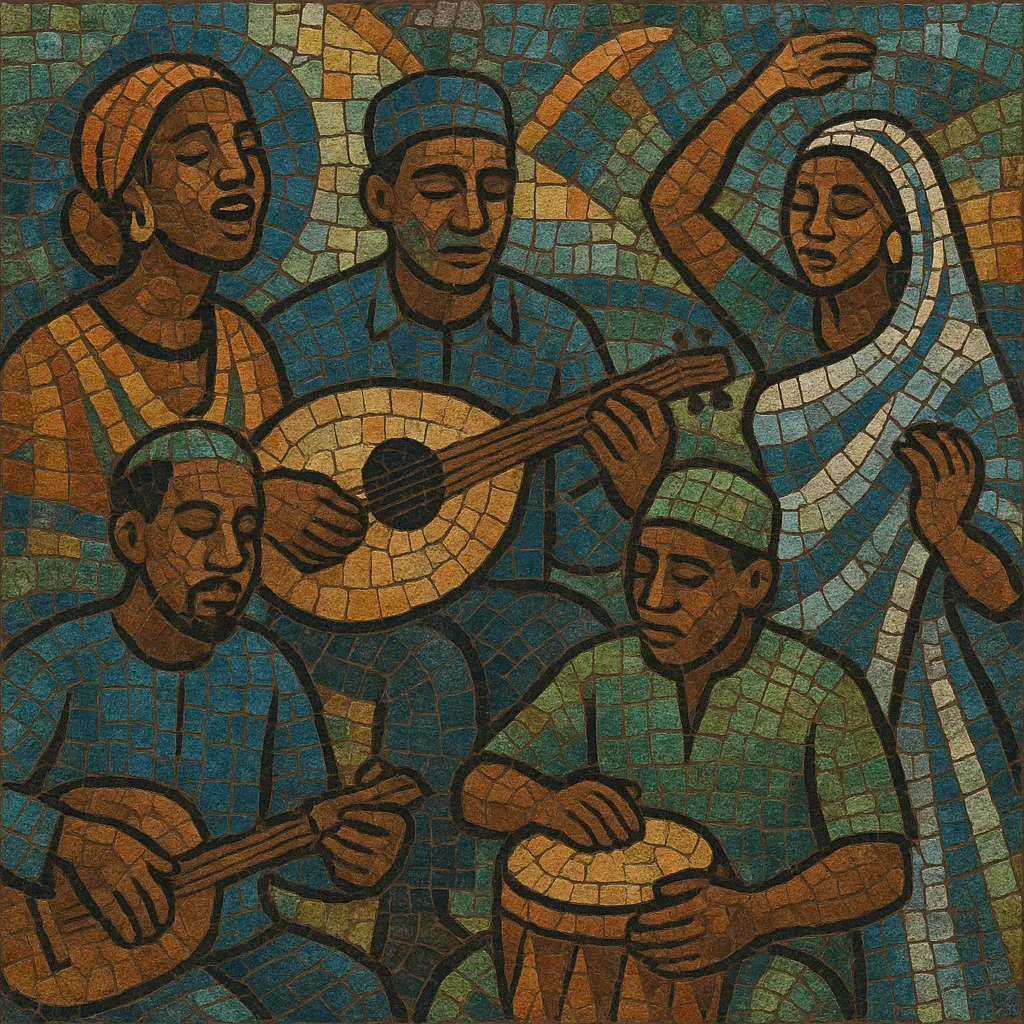Somali music is a family of traditional and popular styles from Somalia that blend the country’s rich poetic heritage with melodies played on the kaban (oud), hand drums, and later, electric bands.
It is prized for its intricate, alliterative lyrics, call-and-response vocals, and dance rhythms such as dhaanto, alongside urban song forms like heello and qaraami.
From the 1960s through the 1980s—often called the “golden age”—large state and radio orchestras, theatre troupes, and nightclub bands in Mogadishu and Hargeisa developed a distinctive sound that sits between Swahili coast taarab and Arabic maqam-based song, while incorporating East African grooves and, later, funk, disco, and jazz.
Today, the tradition continues both inside Somalia and across a vast diaspora, where classic repertoires are revived and fused with contemporary pop, reggae, and hip hop.
The modern Somali song tradition coalesced in the 1940s around the heello form, pioneered by Abdullahi Qarshe. Heello adapted longstanding Somali poetic metres and alliteration into strophic songs accompanied by the kaban (oud) and hand percussion. On the coast (Mogadishu, Marka, Baraawe), Benadiri repertoires reflected deep ties to the Swahili coast and the Arabian Peninsula, resonating with taarab and Arabic maqam aesthetics.
After independence in 1960, national theatres, radio orchestras (e.g., Radio Mogadishu), and touring troupes such as Waaberi professionalized performance, nurtured composers, and trained star vocalists. Urban styles flourished: qaraami (romantic urban song), theatre songs, and dance music for social events. By the late 1970s and 1980s, bands like Dur-Dur and Iftin folded funk, disco, and jazz into Somali rhythms and modes, creating a vibrant nightclub scene documented on now-legendary recordings.
Civil war shattered institutions and dispersed artists across the Horn of Africa, the Middle East, Europe, and North America. Despite hardship, cassette culture and private studios sustained the repertoire. Diaspora hubs preserved classic qaraami and theatre songs while experimenting with reggae, R&B, and emerging global pop.
Reissue labels and archives have brought the golden-age catalogue to international audiences, sparking renewed interest at home and abroad. Contemporary performers blend traditional poetry, dhaanto-derived rhythms, and oud-based melodies with keyboards, drum machines, and global pop frameworks, ensuring Somali music remains both rooted and forward-looking.


